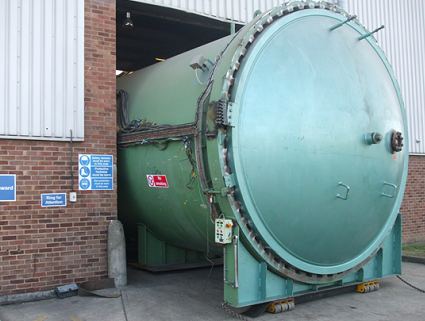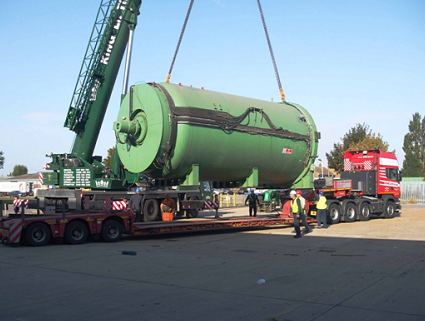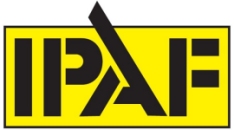The relocation of complete production lines incorporating different production machinery from conveyors, wrappers, cartoners, labellers and case sealers,
from Auburn, Maine, USA to Portsmouth, Hampshire UK. We worked side by side with the customer's project manager from the early stages of the project,
to plan and organise every aspect of the job including
timescales, loading plans, transportation and health and safety.
While the machinery was still in operation an auditing team flew out to establish the condition of the lines and make notes for spares required for
refurbishment. The auditing team then took vital timings and measurements to use as a bench mark when installing the machinery. Once the audit was
complete the rest of the team flew out and the lines were handed over. Once the lines were handed over they were disassembled in a methodical manner.
Rather than disassembling the complete units, two 10m steel frames were manufactured to pick two of the units off the line. This reduced time considerably. Both
production lines were vacuum sealed and packed into 30 wooden crates, which were then loaded into ten 40ft sea containers and shipped to the UK.
RJB managed all of the exportation and importation documentation to allow the production lines to be delivered to the site in the UK on time.
Once at the new site, the lines where installed in parallel to their existing foot print. Due to the voltage and frequency difference between the USA
and the UK a 50HZ conversion was under taken of both lines this entailed changing most
motors and transformers.
The lines then had their final checks:
Once all of these tasks had been undertaken successfully the line had a 5 minute shakedown, to check rotation on the motors and also to see whether any of the components had come loose in transit. After the shakedown a full 1 hour dry run was undertaken, monitoring the lines for:
After the 1 hour dry run was completed the line was handed over to the customer.
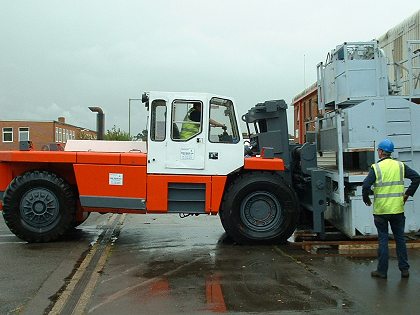
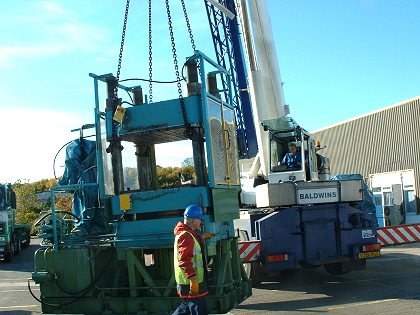
The relocation of a seal manufacturer from Southampton to Derby and fit out the new site with a chilled water system,
compressed air ring main and power to
all the machinery. A total of 36 machines were moved and the project took 6 weeks including the site services. Working with
the customers project manager we were able to offer
a complete turn key project.
A 300M 75mm diameter ABS plastic chilled water ring main and a 300M 50mm diameter galvanised air ring main were installed at
4 meters from the floor level.
To keep cost to a minimum the routes of the pipe work were directed over the proposed location of each machine, this also
allowed the cable tray to be
fitted from the same fixings. The chilled water and compressed air circuits were commission tested and full documentation
issued to verified the installation.
Before any of the machines were disconnected all of their hydraulic tanks were pumped clean by a special purpose road
tanker and a documentation of disposal
was issued.
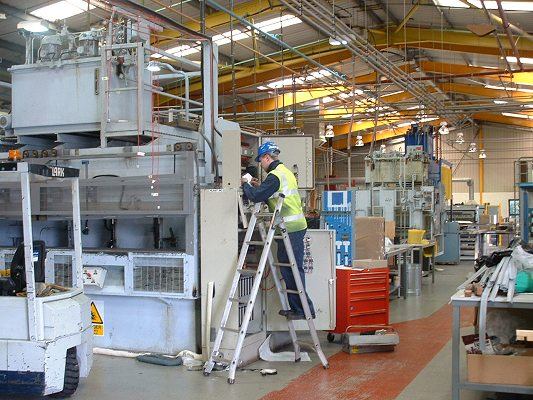
The machines weighed from 500kgs to 30,000kgs. Each machine was disconnected from the mains services and where interconnections had to be split they were
tagged and a detailed record made of all disconnections. Because of the size of some of the machines a detailed project schedule was produced, to facilitate
access to all areas and also keep some of the production
on-going. Most machines were lifted by a 30 ton fork truck as they were top heavy and unsafe on machine skates.
Once out of the factory they were loaded onto low loaders and flat beds and then transported to Derby. The machines were unloaded with a
70 tonne crane and placed outside the new site, the main door and about 2 meters above had to be removed to allow access of the larger items. Each machine was
put into its correct location, refilled with oil, levelled and the main services reconnected.
Several tests were undertaken before start up:
Once these tests were completed the machine was started and tested in all operations and then handed over to the customer.

The relocation of a rubber mill and mixer unit, from Southampton to France.
Following our survey of the French site it was clear that the intended location would not accommodate the height of
the machine. The solution was to reduce the
height of the machine once in France and also to sit the machine in a pit.
The mixing unit weighed 12tonnes and was situated on a mezzanine floor, 3 metres off the floor. With no access for an
overhead head lift, the machine needed
to be lifted down on a fork truck. However, to complicate matters there was a large mill under the mixer, which the
mezzanine floor had been erected around.
Our engineers came up with a strategy of adding removable legs to the mezzanine floor to allow us to remove the large
mill. With the mill removed the
mezzanine floor was marked and removed to allow us to lower the mixer to the ground safely. The mill was loaded onto
a hiab lorry and the mixer was loaded onto a low loader trailer while the mezzanine floor and associated parts were put
onto a curtain side lorry
Once in France the machines were unloaded into the factory via a loading bay. As the machines were going in a pit, a
ramp was constructed for two purposes:
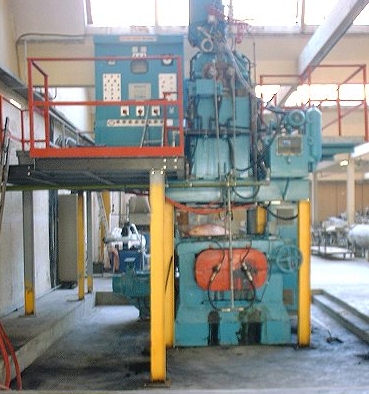
The mezzanine floor was shortened and the mixer was installed and levelled. The mill was installed once the mixer was in. Our engineers then re-connected the interconnections and site services. With the machinery ready for testing we performed the following tests.
Once these checks had been completed the machines were handed over to the customer.
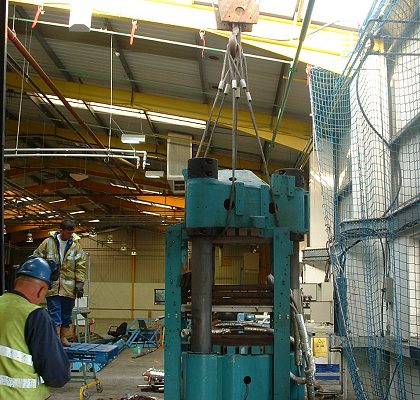
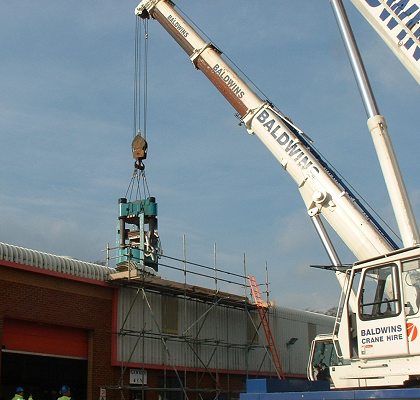
The relocation of a 50 ton hydraulic press from Southampton to Ashchurch
The press was sat in a 1.5M pit and we considered several options on how to remove it from site.
Option one:
To disassemble the press into movable sections, then reassemble it at its final location. This option was ruled out due to time scale and cost.
Option two:
To lift the press out of the pit on power lifters, then lay it horizontally, to get it out of the door. This option was ruled out as it was deemed too dangerous.
Option three:
The final option was to remove the roof and lift the machine out in one piece. This option was chosen as it was low risk and kept to the time scale.
The press had all of its hydraulic oil drained and all the connection points plugged. All of the mains services were disconnected and the
press made ready for the lift. A specialist, roofing contractor removed the roof then a 220 tonne crane and a 100 tonne crane
were positioned outside the building.
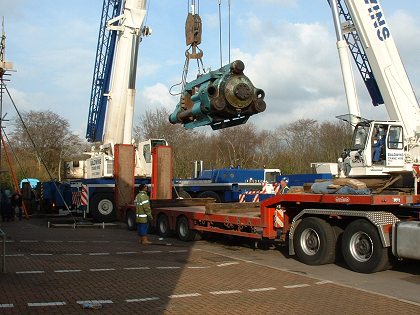
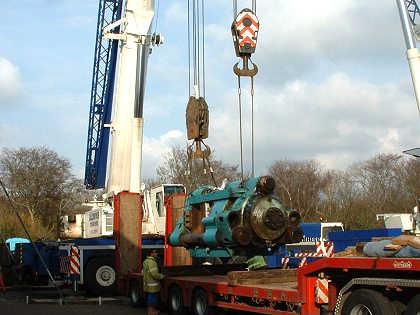
The 220 tonne crane lifted the press from its position up through the roof and then the 100 tonne crane hooked onto the
other end, allowing the press to
lay in the horizontal plane. Once in the horizontal plane a category 2 low loader was reversed under the press. The press
was then lowered onto sleepers and
dog chained down.
At Ashchurch the machine was lifted from the horizontal plane on the low loader, back to its vertical plan and placed in
the location stated by the customer.
Once in position the machine was handed over to the customer.
The relocation of 5 complete production lines incorporating different types of production machinery, from Portsmouth,
Hampshire, UK to Budapest, Hungary.
RJB worked in conjunction with the project team as this was a major project. We were under strict confidentiality as
the planning for this size of project
was colossal. We had complete control of every aspect including timescales, loading plans haulage, and health &
safety.
A week before the machinery was due to shut down the auditing team completed a full audit to establish the condition of
the line and take vital measurements
and timings. Once the lines were shut down our skilled engineers disassembled and electrically disconnected the machinery
taking care to mark all the cables
and record all the disconnections. As the machinery was split they were taken downstairs via the numerous lifts ready
to be packed.
The machinery was vacuum sealed and fixed to pallet skids, and then loaded on to dedicated curtain side lorries. There
were approximately 20 pallets in total
for each line which took up space on four 40ft lorries each time.
Having cleared customs the lorries were brought onto site and unloaded in the designated area. Due to the large amount
of equipment to be installed the lines
were set up in two production areas located within the site. The lines were installed to the original footprint and
substantial conveyors were made to carry the product to the packaging area. All connections
were made and checked as well as vital timings. The lines were then ready for testing.
Static & dynamic checks carried out to check that before any mechanical parts are powered rotated or moved that they
are timed correctly and will not crash.
Yellow Lining:
To prevent electrical damage, each cable that has be connected is checked in accordance with the notes and drawings by a
different engineer to whom connected it.
Input/Output Checks:
To check the function of all the PLC controlled components eg, sensors, solenoids and solid state relays.
Once all of these tasks had been undertaken successfully the line had a 5 minute shakedown, to check rotation on the
motors and also to see whether any of the components had come loose in transit.
After the shakedown a full 1 hour dry run was undertaken, monitoring the lines for:
After the 1 hour dry run had been completed successfully the line was handed over to the customer.
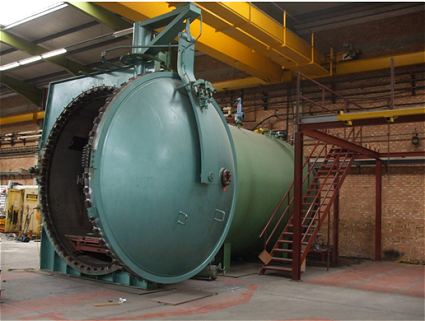
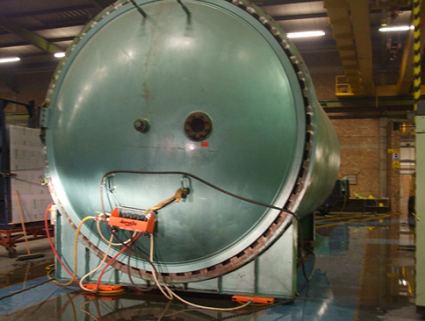
Autoclave: RJB relocates 45 ton autoclave from Sittingbourne to Southampton.
The customer need to remove the Autoclave from the site in a short period of time as they had to hand the building
back to the landlord,
RJB came in and project managed the whole relocation.
